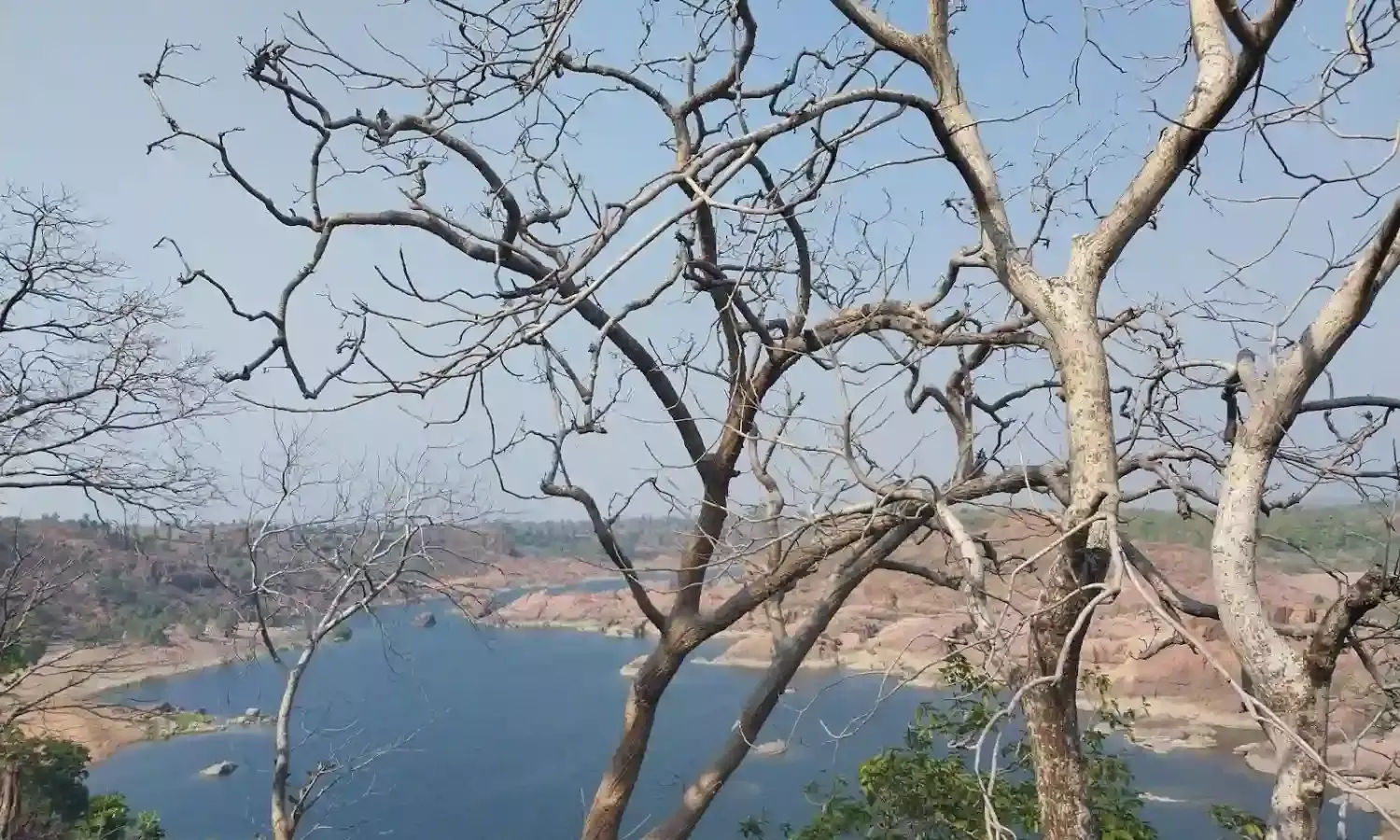A Refuge for Gharials
Photo story

At the watch point at Muhareghat inside the Ken Gharial Sanctuary, forest guard Kalyan Sahu adjusts his binoculars to focus intently on the rocks dotting the blue clear surface of the Ken river. It is a sunny day with a sharp wind blowing.
After a few minutes, he passes it on and explains from a distance that it is sometimes difficult to distinguish a crocodile from a gharial basking in the sun.
The latter subsists on fish and has a snout. Gharials are deemed critically endangered in the International Union for Conservation of Nature Red List of Species. The species is also listed under Schedule I of India’s Wild Life (Protection) Act of 1972.
Both gharials and crocodiles are found in the Ken river.
Ken Gharial was notified a sanctuary for gharials in 1981. It is about 20 kilometres from Khajuraho, a Unesco world heritage site.
Heera Kushwaha, who has been a sanctuary guide since 1999, says its total area is spread over 45,000 square kilometers. The sanctuary abounds in gharial, wild dogs, nilgai, chinkara, spotted deer, wild boar, jackals, and many more species. Stray cattle, however, are a major threat and compete with the herbivores for grazing.
“It is called the Ken Gharial Sanctuary after the river. Gharials were released here from the Chambal river from time to time. The Ken is one of the major rivers in Bundelkhand and spans Uttar Pradesh and Madhya Pradesh. Gharials and crocodiles can be spotted anywhere along the stretch of the river in the sanctuary,” says Heera Kushwaha.
The Ken Gharial Sanctuary is part of the Panna Tiger Reserve and famous for its cascading waterfall in the monsoon season. Kushwaha says that during the rains, the place resembles a mini Niagara Falls. A thin layer of water can be seen falling from a point. It is the Raneh waterfall, a popular tourist destination. “When there are heavy rains, water is seen falling from numerous points,” he explains.
The area is also noted for its volcanic rocks of five different shades: black, red yellow, pink and brown. The rocks are granite, dolomite, basalt, quartz and jasper. A volcanic eruption happened here about 450 million years ago giving rise to these rock formations.
Inside the sanctuary, the rocks form a canyon, five kilometres long, through which flows the Ken river. The Ken starts in the Katni district of Madhya Pradesh. It is in the news for the government’s Ken Betwa Interlinking Project and the impact it will have on the region’s ecology.
Before being posted in Ken Gharial Sanctuary, Kalyan Sahu worked in the buffer area of Panna. He has been at the Ken sanctuary for four years. There are seven forest guards at the sanctuary and a ranger. The sanctuary has a rich variety of flora, including many Indian ghost trees.
It is difficult to put an exact figure on the number of crocodiles and gharials. Besides the Ken, gharial is also found in the Chambal and Sone rivers. “Apart from gharials, many visitors are happy to spot spotted deer, birds and blue bulls in the sanctuary,” says Kushwaha.
Gharials have been released about four to five times into the river. As it is an open area, the gharials flow downstream during the heavy monsoon and do not stop on at Muhareghat. “Once, 25 gharials were released in the river. But at present there are more crocodiles than gharials,” says another guide, Ram Asre Bhagarv. To increase the number of gharials, between 1983 and 1999, 84 gharials were released into the Ken river.



